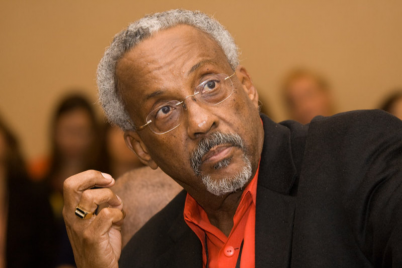Learn the steps of effective consensus building in 7 steps.
BY MICHAEL F. BROOM, Ph.D., Organization Development Psychologist
Creating consensus, the easy way
When commitment to keeping the agreement is important, consensus decision-making is the best way to establish an agreement within teams and other groups. However, a consensus has the reputation of being interminably time-consuming, but it needn’t be if we stick to the steps listed below.
The failure of most supposed consensus procedures results from the process turning into one seeking unanimity. Imagine a team where eight of 10 agree about a new sales policy.
The other two don’t care for the idea, causing the others to attempt to convince them to change their minds. This typically causes the two to dig their heels in even deeper. Following the consensus procedure, that would not happen. Let’s see what would.
The steps of effective consensus building
- Be clear upfront that consensus will be the process to make decisions, then review the following process.
- After a thorough discussion, and most participants are leaning toward a specific option, it’s time to see if a consensus is possible. Restate the popular option and check to ensure everyone understands it the same way. This leads to greater explicitness and clarity. Be sure to check with everyone.
- Once the option is clear to everyone, check with each person, one at a time, to see if they are in favor of the proposed decision.
- Ask each person not in favor to state the reasons for their opposition. Be sure that each person feels heard. This is very important; feeling listened to alone can turn a negative response into a positive one. Also, the group may improve the proposed idea from the information provided.
- After each dissenting statement, ask if s/he is willing to proactively help implement the proposition, even though the person is not in complete agreement with it. This distinguishes consensus decision-making from unanimous decision-making! Unanimous decision-making is a process that can take forever. Consensus slips into unanimous decision-making when someone or the group tries to convince the dissenting person to change their mind. Do not allow that to happen!
- Ninety-five times out of a hundred, the dissenting person will say something like, “Sure, I’m a team player.” Then move on to the next dissenter if there is one.
- If someone feels so strongly about their objections that they are unwilling to help make the proposed decision work, ask the group to consider them further. This is rare, but when it happens, the objection often turns out to be an important one. In the rare case that the dissenting person refuses to join the consensus, there is a problem of some other sort to identify and resolve.
When rigorously followed, the frustration and time-consumption often associated with consensus decision-making will disappear.
Be sure to check that everyone’s agreement is whole-hearted. Hesitations and odd body language can serve as signals for further probing until clarity and full agreement is achieved.
Contracting for an intended impact also includes achieving clarity and buy-in for the strategies and tactics to achieve the goals. With Hiram’s hospital, they chose a healthcare strategy that is becoming popular, “the patient comes second.” Check out the book “Patients Come Second” by Britt Berrett and Paul Spiegelman, if this is of interest.
Contracting with specific individuals to be responsible for follow-through on specific strategies and tactics is also essential. Without it, we can miss deadlines, and tasks can slip through the cracks with no one to hold accountable.
This part of contracting should include who will do what, by when, and whose help is needed. Many organizations have accountability problems. They include government agencies and successful organizations that can afford the waste. Other organizations learn to contract well for who is to do what by when, or they go out of business.
Stay tuned for the next article about contracting to learn about agreements that support the healthy relationships needed to maintain healthy teams. It’s something we don’t think about very much. In the article after that, we’ll learn about contracting to help manage egos. You may not have one, but most of us do.
We think too little about explicit contracting; when we give more time and attention to it, the probability of effective execution increases. And contracting is at the heart of effective relationships, which is at the heart of effective projects, teams, and organizations.
 Michael F. Broom, Ph.D., has been an organization development psychologist for 45 years. He consults with organizations of all types, including Google and Genentech, among others. He has taught at major universities, including Johns Hopkins and American. For more information, you can contact him at www.chumans.com or michael@chumans.com.
Michael F. Broom, Ph.D., has been an organization development psychologist for 45 years. He consults with organizations of all types, including Google and Genentech, among others. He has taught at major universities, including Johns Hopkins and American. For more information, you can contact him at www.chumans.com or michael@chumans.com.








